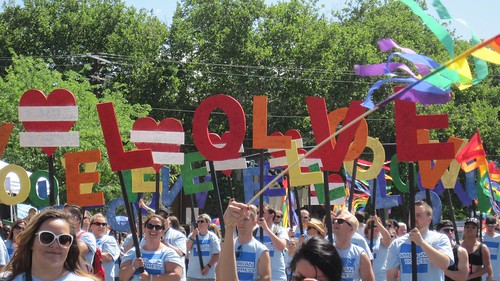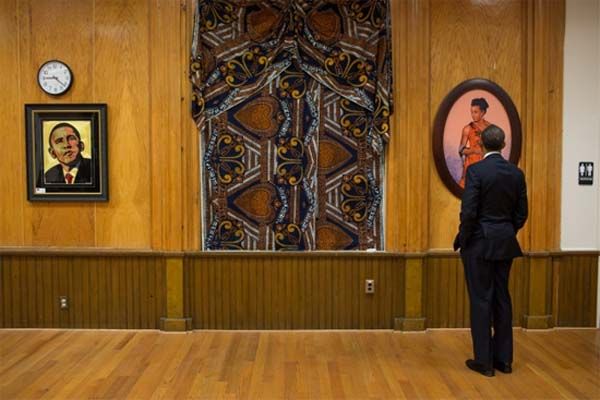Yesterday I posted a diary about my fear that we are returning to the antebellum south. Today I share with you a blog I wrote some time ago but did not publish until today In it I try to explain one reason (among others) that current events disturb me so much. Until now, I had only shared this with one person (you know who you are).
I would love to share with you what link Jackie Robinson, Satchel Paige, John McLendon, Marlin Driscoll, and my dad share. It is a fun story that I think you, would love and I have not been able to share with anybody.
 John McLendon
John McLendon
My Dad was born in a very small hut in a very small town in Adamsville, Tennessee. The hut where he was born was located at what is now home plate in their baseball field. His mother died in childbirth, unattended. Not only did he never have a birth certificate, noone, including himself, ever really knew what year he was born. We guessed. (Coming up may be some words that I know are offensive. I hope you will forgive that, as it was part of the era – he was born in either 1917, 1918 or 1919 so the world saw things differently.) Since his father was the town drunk who never quite forgave my dad for “killing his mother,” he was shuffled from aunt to aunt. He worked in the fields with the black kids, hoeing cotton and tobacco. When the hoeing was done, they would together go slip under the fence to watch the Negro leagues baseball games. He fell in love with baseball. He also fell in love with basketball and would practice shooting and dribbling until the sun went down.
When he graduated from high school – he was young to graduate even with the uncertainty of his birth – he tried to get a baseball scholarship. Eventually he got one at Milligin College in Tennessee. He had athletic scholarships, an orphan’s scholarship and cleaned the gym to pay for his education. He played on the varsity tennis team, baseball team and basketball team. He graduated with a degree in English.
Here is where it gets murky for me – Dad didn’t talk about his past much. At one time, the St. Louis Cardinals drafted him. He played second base in their farm team in Johnson City in Tennessee. Somehow he wound up in Raleigh-Durham playing baseball and basketball and coaching women’s basketball (yes, they had that in the south then). Recall, John McLendon was coaching in Durham at that time. Hold that thought. (It was also in this time that Sam Snead taught him to play golf.)
When the war came, since he had a college degree, when he enlisted in the Navy, he was made an officer. Eventually he wound up a captain in the Navy, but I am not sure what he went in as. They made him morale officer at Pearl Harbor. His ship just missed being there when Pearl Harbor was bombed – Dad said Sam Snead was late for the ship. Not sure if that was true or tongue in cheek. His job was to recruit entertainment for sailors coming to Pearl to heal. It included sports teams, entertainers, etc. At various times, his baseball teams had names like Stan Musial (who he had met in the St. Louis system), Pee Wee Reese, Johnny Majors, Bob Lemmon (who dad converted from shortstop to pitcher because Bob couldn’t throw straight), Dom and Vince DiMaggio (Joe went with Army), Phil Rizzuto, Leo Durocher, Bob Feller, and many more.
This next part I am not sure of. I sat one day as a kid with Satchell Paige. Satchell had come to Denver (during the minor league days) to do some sort of pregame demonstration and since Dad was doing color in the announcer’s booth, Dad left me with Satch. (A lot of the grown ups sitting around us did NOT approve.) As anybody knows, Satchell could spin a yarn, but I don’t know how he could invent this out of thin air …
At some point while at Pearl Harbor, according to Satchell, Dad decided he wanted to recruit some of the players he had watched from the Negro leagues. Dad (this I know is true) had always believed the black players were at least as good as the white players. So anyway, Satchell and Dad agreed that Dad would start getting his players mentally ready to accept playing with “coloreds” while Dad tried to get the ok from his superiors. Finally, Dad’s superiors threatened his commission and he dropped it. But a thought had been planted …
Several years later, Jackie Robinson was selected to break the color barrier. Branch Rickey was the President and GM who hired Robinson. But on the team were Johnny Majors (I think he was General Manager), Pee Wee Reese (Team Captain) and Leo Durocher (I think he was coach?). Satchell wondered if maybe Dad’s preaching in Pearl had something to do with getting Jackie accepted by the team. We will never know.
The rest of this is not from Satchell.
After the war, Dad moved to Denver. He got a masters in business at Colorado College and became an English professor, baseball and basketball coach at Regis Jesuit College (even though he was a Methodist). He became a celebrity in Denver because his basketball teams were very successful. They used a totally different style of play – and if you studied it you would see shades of John McLendon. Over time, he became active in bringing sports to Denver.
First, there were the Denver Broncos. Dad secured the financing so the team could be brought to Denver (Dad was a banker with Central Bank). He led the drive to build Mile High Stadium that would keep the Broncos in Denver. And he pushed Denver to bring in Marlin Briscoe as quarterback. Marlin Briscoe was the first black quarterback in professional football.
Then there were the Denver Rockets (now the Denver Nuggets). Dad was part of the original ownership group. While he was still an owner, he convinced them to hire John McLendon as their coach. John was the first black coach in professional basketball. However, he lost almost all of his investment when the partnership sold.
Many years later, he co-chaired the Colorado Baseball commission. He started working on getting baseball to Denver in the early 70s, and I can remember him talking about some choice meetings he had with Peter Ueberroth as they argued over whether Colorado could support a professional baseball team. Anyway, they finally got baseball in 1993. And, of course, the first home run hit at home for the National Baseball League team was hit by Eric Young, again, a black man. So, Denver had our first black quarterback, our first black professional basketball coach and nominated our first black president. That just tickled the heck out of me and I really wanted to tell KO that. (When my dad died three years ago, only the family was at the funeral. The rest of Denver had forgotten him.)
I don’t know how to verify parts of this story, but I do know the rest. This battle for equality has not been waged by black people alone, but by people who knew that skin color has no more relevance to a person’s character, capability or intelligence than hair color.


